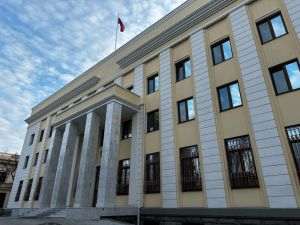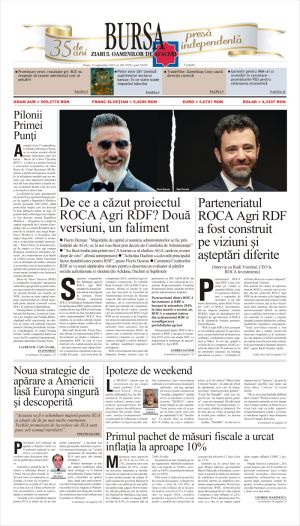• The quarterly dynamic of the GDP was +5.6% in the third quarter, about 50% of the EU growth
• The economy fell 5.1% according to the gross series, and 4.6% based on an adjusted series, after the first nine months of the year
The economy still has a long way to go before reaching the pre-pandemic level, according to data on the evolution of gross domestic product (GDP) for the third quarter published on Friday by the National Institute of Statistics (INS). GDP is at the level it was at two or three years ago, and is still far from V-shaped recovery claimed by government officials, but statistics still show a strong revitalization of the economy in July-September, after the record contraction in the second quarter, when the restrictions drove the Romanian economy into its most difficult period since 2010.
Growth in the third quarter was below analysts' estimates: the GDP grew at a quarterly rate of 5.6% in the third quarter of 2020, about 50% of the pace of GDP growth in the EU, compared to an estimate of + 7.2%, after the 12.2% adjustment in the second quarter due to the effects of the quarantine. Romania will avoid the technical recession this year, due to the fact that the economy grew at a quarterly rate of 0.3% in the first three months of 2020.
Year-on-year, the GDP was 6% lower at the end of the third quarter of 2020 compared to the end of the third quarter of 2019, and a complete recovery is likely to emerge somewhere in 2022. The evolution also depends on the effect of the new restrictions applied In this end of autumn, all over the world, on consumer sentiment and economic activity.
The NBR warned on Thursday that, domestically, economic data and information show "an better than expected recovery of the national economy throughout the summer", backed by the government programs and the NBR's monetary policy measures, a recovery that is likely to be interrupted, however, towards the end of this year, or even to reverse slightly (W-shaped evolution), "against the background of the resurgence of the pandemic and the restrictions on mobility".
Even if the contraction rate of 6% YOY in the third quarter is lower than in the second quarter, (10.3%), the economic contraction is the greatest in the EU, after -Spain (8.7%) (only 20 EU countries had reported by Friday) and comparable the recessions at the end of the 90s and the 00s. Finance Minister Florin Cîţu said on Saturday that it needs to be noted that "q3 2019 was a very good one".
The median quarterly dynamic of real GDP this year is -2%, two times worse than the EU median of -1%.
Also, comparing the economic dynamic during the first nine months of 2020 with that of the similar period of 2019, the GDP fell 5.1% according to the gross series and 4.6% according to the seasonally adjusted series. Using that indicator, the dynamic gives us hope for a recovery, given that Western European economies have declined by as much as 11% so far in 2020 (as is the case in the UK). In any case, a significant shortfall in the GDP formation compared to last year almost certainly came from agriculture, considering this year's historical drought, which has gripped Romania.
We will have a clearer picture of the dynamic of the economy on December 8, when the National Institute of Statistics will publish estimates on the dynamic of GDP components.











































